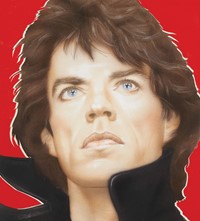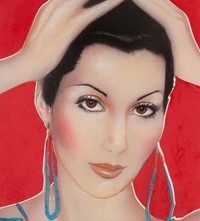Four things you need to know about Warhol’s cover artist, coinciding with the release of a new book about his work
- TextMiss Rosen
When Interview announced that it would cease publication earlier this spring, a flurry of flawless faces that once graced the magazine covers suddenly began to reemerge – each portrait more entrancing than the one that came before. Grace Jones, Diana Ross, Mick Jagger, Michael Jackson, Aretha Franklin, the list goes on. They were all created by the same artist, who rendered them as unforgettable icons of our time – the very same artist who wrote he word “Interview” that appeared over their heads: Richard Bernstein.
Born in the Bronx but raised on Long Island, Bernstein returned to the city to study art at the Pratt Institute in 1958. He adopted a cultured New England accent with a splash of effete-ery, and headed downtown to cavort with the new generation of gay artists like Billy Name, Gerard Malanga, and Danny Williams making their name in Andy Warhol’s Factory scene.
Bernstein travelled to London when the Swinging 60s was at its height, then returned to New York in 1968 and joined the scene as it was taking shape at Max’s Kansas City and the Chelsea Hotel. Bernstein got his start in magazines when he began working with Peter Hujar on Newspaper and Picture Newspaper, a short-lived document of the city’s queer scene. The first issue gave us a taste of things to come: Bernstein’s iconic cover and centerfold of Candy Darling that left nothing to the imagination.
By 1972, Bernstein began what would become a two-decade odyssey as the cover artist for Andy Warhol’s Interview. He joined the magazine just as it was taking shape, transforming from an underground movie magazine to a luscious glossy that brought Hollywood glamour back to life in an effervescent celebration of downtown art, culture, and style. Bernstein’s covers perfectly defined the times, becoming eye-catching emblems of the era.
In celebration of his work, Roger Padilha and Mauricio Padilha have put together Richard Bernstein Starmaker: Andy Warhol’s Cover Artist (Rizzoli), a sumptuous history of the artist’s life and legacy. In conjunction with the launch of the book, Jeffrey Deitch, New York, will host Richard Bernstein: Fame (September 7-October 27, 2018). Here, the authors take us on a whirlwind tour through a singular career.
He worked closely with Warhol
“Richard was a contemporary of Warhol. He hung out with Henry Geldzahler and all those downtown artists. He was very good at being at the centre of a movement, observing what was going on, and translating that into his work. When he started working for Interview, he was not only painting these celebrities, he was friends with them too.
“If you’re not well-versed in Warhol, as a lot of people weren’t back then, it’s an honest misconception to think Andy did those covers of Interview. If you see a portrait with bright colours and a silkscreen quality, you automatically think it’s his, especially if it’s his magazine. His name is on the cover, and even when they removed his name from the cover, he would autograph the covers for people. Andy always did say it was done by Richard Bernstein, and he would say Richard was his favourite artist because he made the people look so glamorous. Andy wasn’t trying to take credit. He did help promote him, but only when asked.”
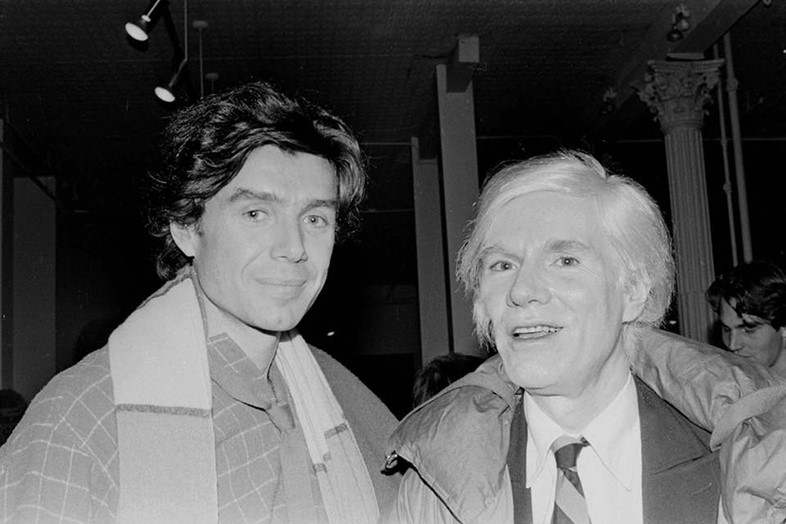
He loved hyper-glamour
“If you look at the movie stars of that era, they were all very people-next-door, and the movies were very real. Even if you look at pictures of the Oscars, like Jane Fonda wore a t-shirt. The movie stars had lost their glamour and that was something Andy and Richard really connected over. Interview was a place that helped restore that glamour. Interview was a nostalgia-based magazine. The very first issues had stock images of Marilyn Monroe, James Dean, and Liz Taylor. What Richard did when he came in was make current celebrities look like a Jean Harlow magazine cover in the 20s and 30s. He and Andy loved hyper-glamour.”
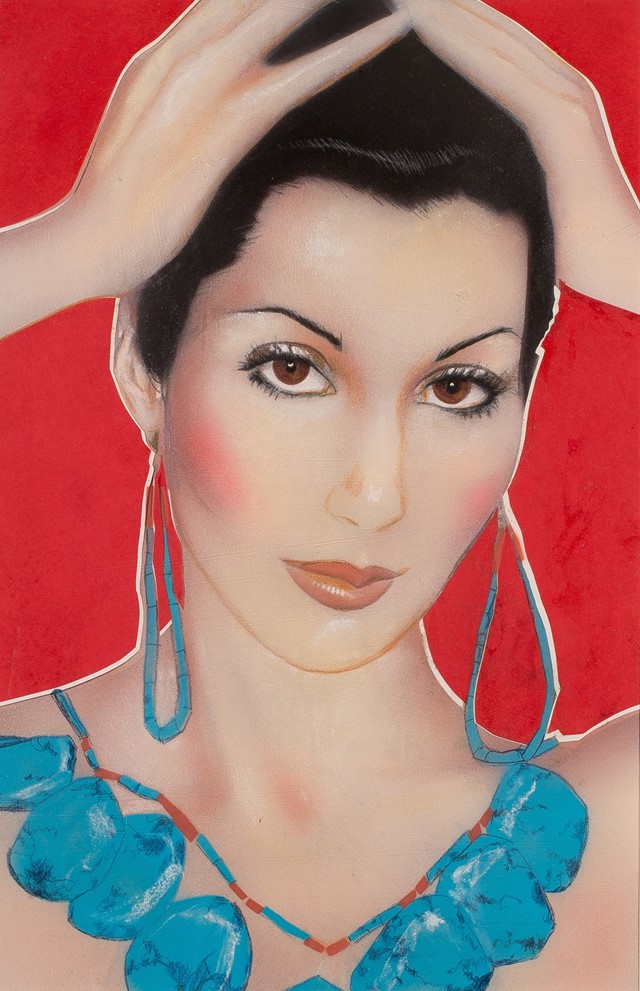
He was influenced by Studio 54
“Richard was a creature of the night. He went out all night long and was able to traverse different social groups. He would go uptown and have dinner at the Plaza with a socialite, then go to Studio 54, then the leather bars on the Westside that were really seedy. He knew everyone and you see that in his work: he was always doing the high and the low and combining the two.
“Studio 54 almost seemed like a clubhouse that opened to house Interview. There is a lot of glow in Richard’s work, this white glow he put around everyone. Then there are shadows on people’s faces, but they aren’t just black or white – they’re usually hot pink or orange, so it looks like they have disco lights on them. Even at Max’s Kansas City, when he would sit in the back, there was the Dan Flavin light sculpture so that everyone had a red glow and tone about them. All of that inspired the colours on the faces.”
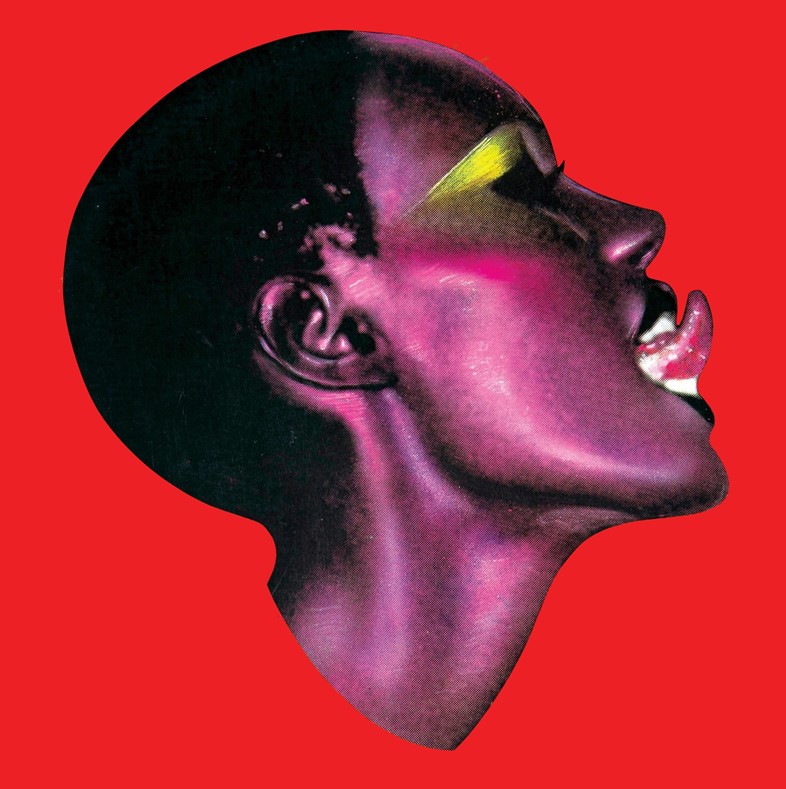
He was best friends with Grace Jones
“Grace was his best friend. When she was starting out as a model, he befriended her. She said she would throw little parties in her apartment and no one would come except for Richard. They became like family. He introduced her to Jean-Paul Goude, and then when they had their son Paolo, he became the godfather.
“In the beginning, Richard did all her disco album covers. The work was so incredible that Warhol looked at it and asked, ‘Why does the work you are doing for Grace look so much better than the work you do for me?’ Grace told him, ‘I don’t give him any revisions. Whatever he gives to me is what I put on the cover.’ When she told Andy that, he told everyone at Interview, ‘Whatever Richard brings in is what we are running.’ The next issue Richard did was a cover of Diana Ross, and he did the image very similar to the image of Grace that Andy was so in love with. They have very similar make up and cropping. It was the highest selling issue of Interview to that date. After that, Andy was like, ‘No one mess with Richard.’”
